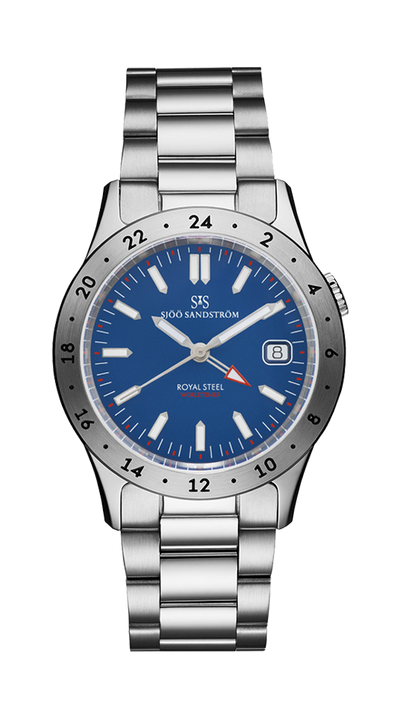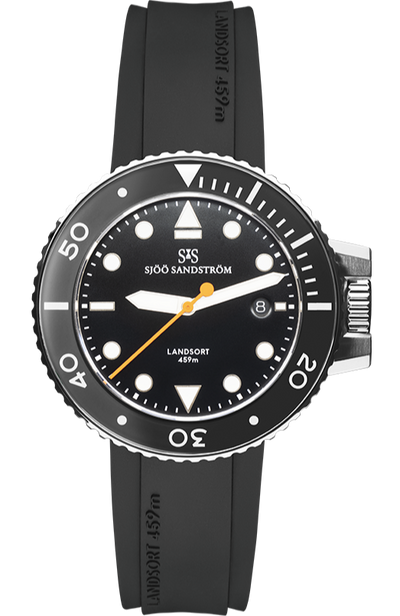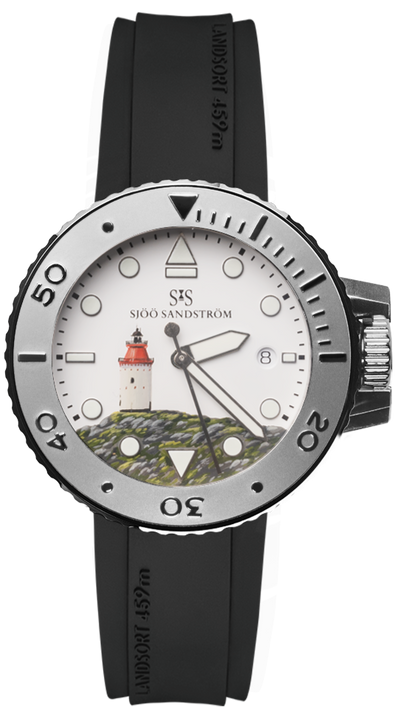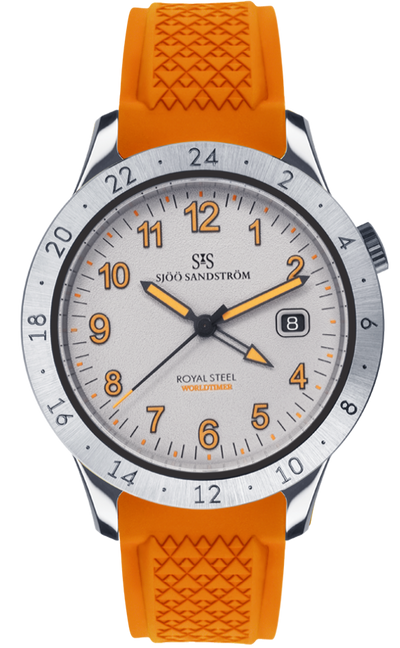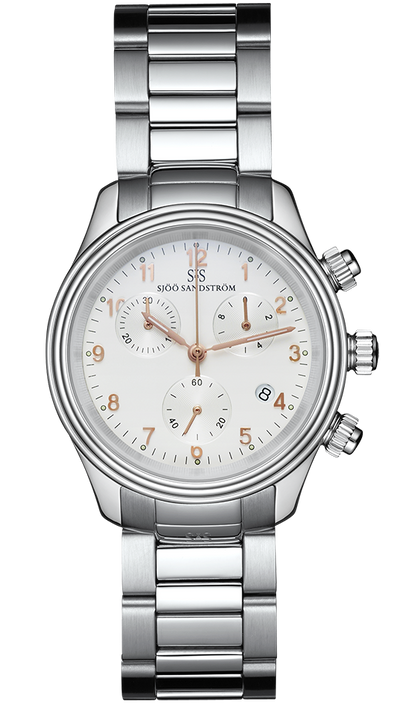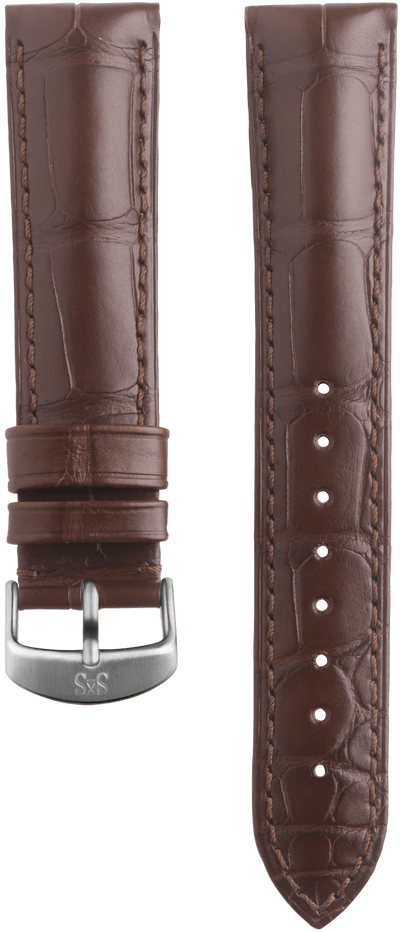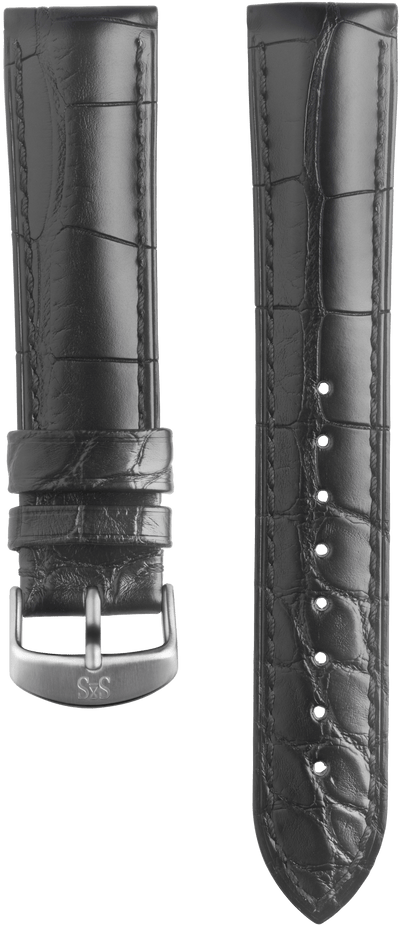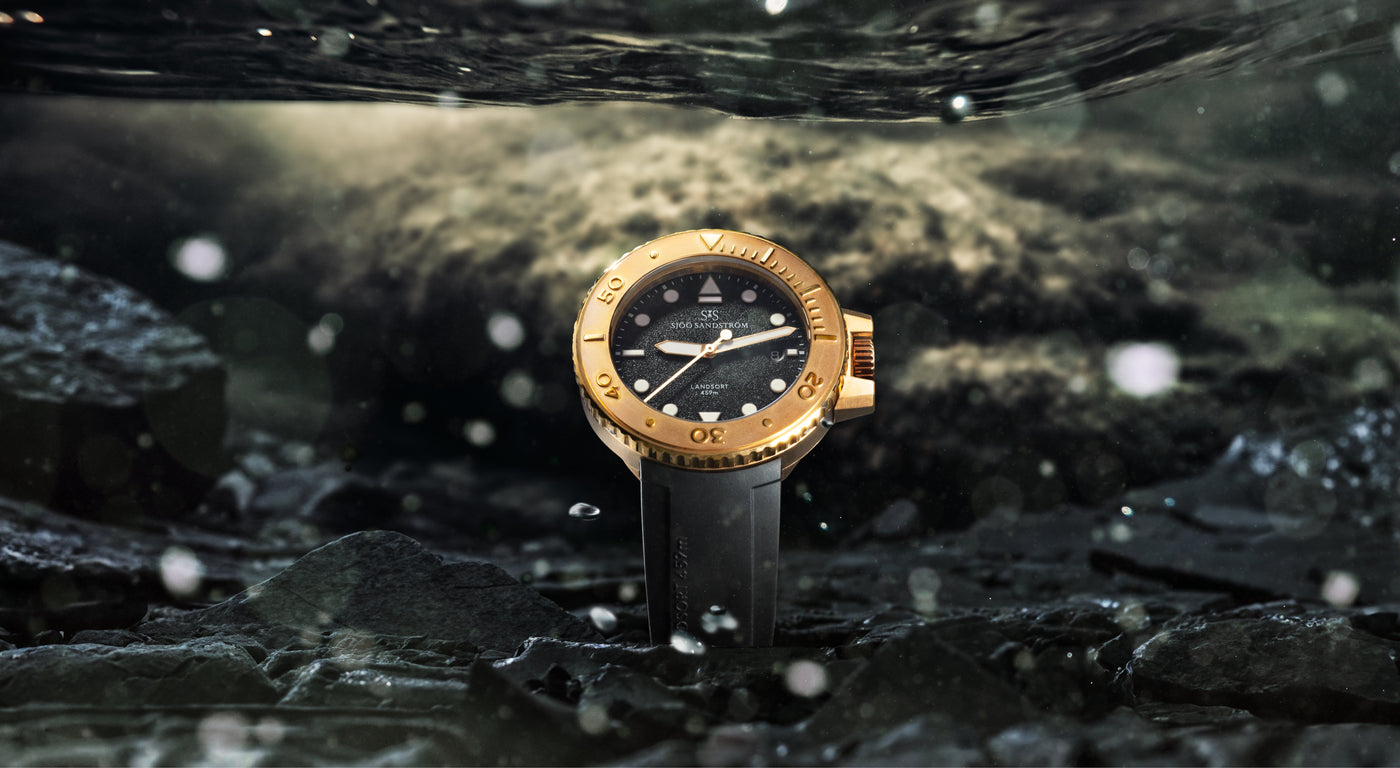To design and produce a diver’s watch has long been a dream and a plan at Sjöö Sandström. This dream has now been realized with Landsort 459 m, our new diver’s watch, launched worldwide through fall 2011.
The watch is designed by Stockholm designers Pontus Frankenstein and Christian Halleröd, in close collaboration with a team of watchmakers at Sjöö Sandström under the leadership of master watchmaker Niclas Höglund.
The design process started with a range of professional requirements specified by divers from the Swedish Navy stationed at the Musk. naval base south of Stockholm. The divers provided assistance throughout the design process. The watch is designed and constructed to sustain the pressure experienced at 459 meters, the depth of the Landsort abyss, the deepest ravine in the Baltic Sea, located 22 kilometers off Landsort, an island in the Stockholm archipelago that is prominent in Swedish maritime history as the site of one of the country’s oldest sea pilot stations and lighthouses.
For Pontus Frankenstein, Creative Director at Frankenstein Design Studio, designing the time piece was a first. His heritage in the timetelling field, however, runs deep.
“My grandfather and many other relatives from that line of my family were watchmakers, and my aunt was the first female master watchmaker in Sweden,” says Frankenstein. “I grew up with watches and I’ve always been fascinated with looking into mechanical complications. The precision of that handicraft is just so astonishing. I’m also intrigued by the entire concept of time. However did humans first agree to start counting it?”
When designing the Landsort watch, the team first scrutinized the global market to find the optimal fundamental movement calibre for the product. Watch movements is a sellers market with limited supply of haute horologerie, so finding the perfect option took time. The main case and the rest of the watch was then designed to suit the movement, and to meet the demands specified by the marine divers.

“We quickly opted for a solution based on a completely round, circular shape,” says Pontus Frankenstein. “The inspiration came from the divers’ professional instruments, which were all in perfect round shapes. The perfectly circular impression we sought forced us to find some new solutions for the bracelet fitting and for the dial, which I think has contributed to the character of this watch. Much of the design is also consequence of the naval divers’ demands, for example the dimensions, the complications of the movement, the construction of the shock resistance and the size and magnitude of the luminous figures on the dial, all adapted for visibility and maneuverability in tough underwater conditions.”
Although Landsort is thus designed and engineered for professional diving conditions, we are certainly most aware of the fact that most of our customers are not professional divers — indeed that many of them are probably not divers at all. A main design requirement has therefore obviously been that the watch must be a cool and desirable item to wear for fashion purposes, whether the customer is a devoted leisure diver or sailor — or if she or he just wants to wear the watch as a stylish accessory with a nice leather bracelet when out on the town or in the deep waters of nightclubbing…
“The trend in divers watches lately has been bling-bling with plenty of aggressive colors, a lot of devices and almost ridiculous performance, like watches made for 1,000 meter or even 10,000 meter depths. I think you may say that our approach is more Scandinavian. The look of this watch is quite stripped down, with a minimalistic color scheme of black, white and red for the indicators. We’ve also let the functions and the materials decide much of the look of the watch, like the color of the tungsten metal in one of the models. Tungsten is another Swedish element, as this metal was discovered by a Swede and has a Swedish name.”


Landsort is the very southernmost island in the magnificent Stockholm Archipelago. This unique and breathtakingly beautiful seascape of more than 30,000 islands, islets and skerries spreads out in a huge fan shape with the Swedish Royal Capital Stockholm as its base.
With its strategic position, the island of Landsort has held great importance in Sweden’s maritime history. No one knows how long the island has been inhabited, but it is first mentioned in writing in the 13th century, as a fishing outpost. In the 1500s, under King Gustav Vasa, Landsort is referred to as a sea pilot station in service of the Royal Navy. The sea pilot station is still in operation, and is thus one of the oldest in Sweden. The famous lighthouse, first mentioned in the 1400s, and built in stone in its present shape in the 1600s, is also one of Sweden’s oldest and most historically significant. Actually, Landsort is really the name of the lighthouse and the sea pilot station, while the 4,5-kilometer long, 700-meter wide island is formally named Öja. Its word of mouth name however is Landsort. Landsort is a highly scenic island with a unique flora featuring a wide variety of rare orchids and other botanically interesting species. The island has long been known as an important site for watching migrating birds. The birdwatching station on the island, which is also used for scientific purposes, was opened in 1988.
Another famous feature is the great labyrinth laid with stones on a cliff, most likely by fishermen in ancient times. There are similar labyrinths on many archipelago islands. Their purpose was probably to give luck to fishermen who passed through the labyriths for good fishing and safe sailing in the hazardous waters. Nobody knows how old this labyrinth is, but the pattern dates back over 3,000 years.
Landsort’s current resident population is around thirty. In summer time, this number is substantially increased. Most of the summer residents are ancestors of Landsort sea pilots and other oldtime inhabitants of the island. Tradition runs deep on this island. The sea pilot station in Landsort currently employs nine seapilots, guiding ships throughout the Stockholm Archipelago and Lake Mälaren waters, where navigation is tricky.
Landsort can be reached year around by boat from the town of Nynäshamn, sixty kilometers south of Stockholm and accesible by commuter train. A visit to this island is an excursion to a strange and wonderful miniature world of tremendous beauty, historic ambiance and an intriguing hint of mystery where the least you could imagine being is just an hour from a major city.




